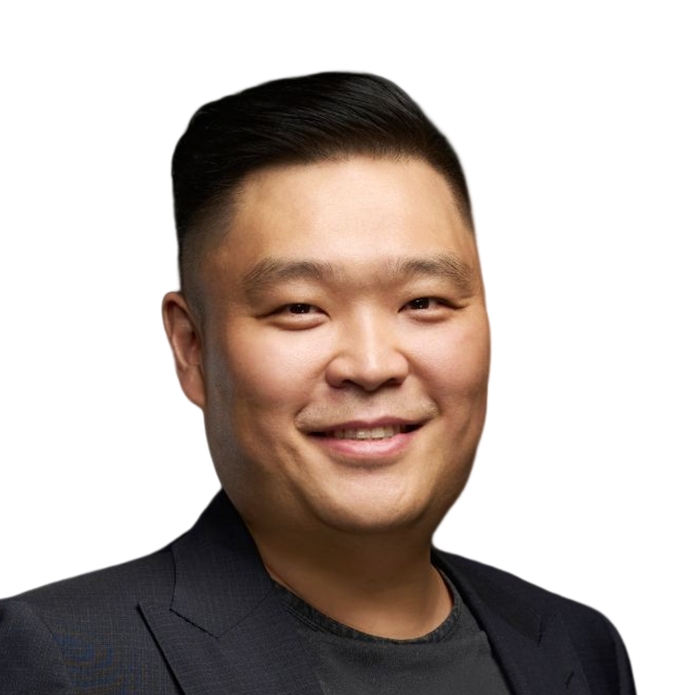 数字引领峰会
数字引领峰会
-
 徐萌萌
保时捷数字科技
用户体验设计负责人
徐萌萌
保时捷数字科技
用户体验设计负责人
保时捷数字科技用户体验设计部负责人,专注于体验设计领域。毕业于清华大学,曾就职于阅文、腾讯、微软、阿里巴巴。2021年光华龙腾奖中国服务设计业十大杰出青年,入选第十七届中国设计青年百人榜。
设计理念:Driven by Dreams.
-
 董恺
美的楼宇科技研究院
用户体验研究中心负责人
董恺
美的楼宇科技研究院
用户体验研究中心负责人
现任美的楼宇科技研究院用户体验研究中心,从事B端数字化楼宇科技领域用户体验研究,在用户体验研究领域深耕12年,曾就职腾讯、京东等企业服务于C端电商领域。目前专注于智慧楼宇行业,带领团队打造美的数字化楼宇科技iBUILDING数字化平台用户体验设计,B端产品品牌建设及推广等;协助业务数字化转型,共建建筑数字化能力。曾荣获多项红点、iF、IDEA、IXDC等国际奖项及美的集团科技奖励。
-
 刘勇
阿里巴巴
高级体验设计专家
刘勇
阿里巴巴
高级体验设计专家
于2011年服务于电商、外贸业务全链路产品体验设计和优化,与团队完成外贸设计系统CrateD搭建,致力于toB类外贸产品服务体验不断打磨提升。12年电商&外贸系統平台体验设计经验,2014年加入阿里巴巴ICBU设计部,致力于跨境电商交易履约全链路产品体验设计、toB客户体验监测及体验度量、设计系統搭建等实践与驱动。专注于外贸数实融合场景下的体验设计创新,针对行业生态各类数字化协同平台进行革新,提效产业互联网的提效赋能。
设计理念:基于系统工程化的体验设计重构。
-
 饶瑞
腾讯SSV
小红花设计负责人
饶瑞
腾讯SSV
小红花设计负责人
毕业于华东理工大学工业设计专业硕士。2011年加入腾讯,担任腾讯可持续社会价值事业部(SSV)小红花设计负责人,CDC设计&品牌总监,专家设计师。主导公司级设计中台,政务服务,互联网金融/保险,智慧文旅/会展,腾讯品牌形象刷新的体验设计和品牌搭建工作,参与设计QQ,Q+,SOSO等多款互联网成功产品。他希望将不同行业领域的设计沉淀和经验分享出来,让更多设计从业者有依可循。
-
 陈希
OPPO
ColorOS设计总监
陈希
OPPO
ColorOS设计总监
OPPO软件工程用户体验设计部部长,ColorOS软件设计总监,负责ColorOS操作系统的体验构建,在创新体验设计、设计工程实践、体验组织管理等方面具备丰富经验,在操作系统与用户体验领域具备15年经验。所负责团队为欧加集团产品提供具备领先竞争力的软件体验设计方案,构建设计架构与平台规范,提升产品竞争力与组织设计效能。产品服务OPPO、Oneplus等多个品牌,覆盖全球140多个国家与地区。
-
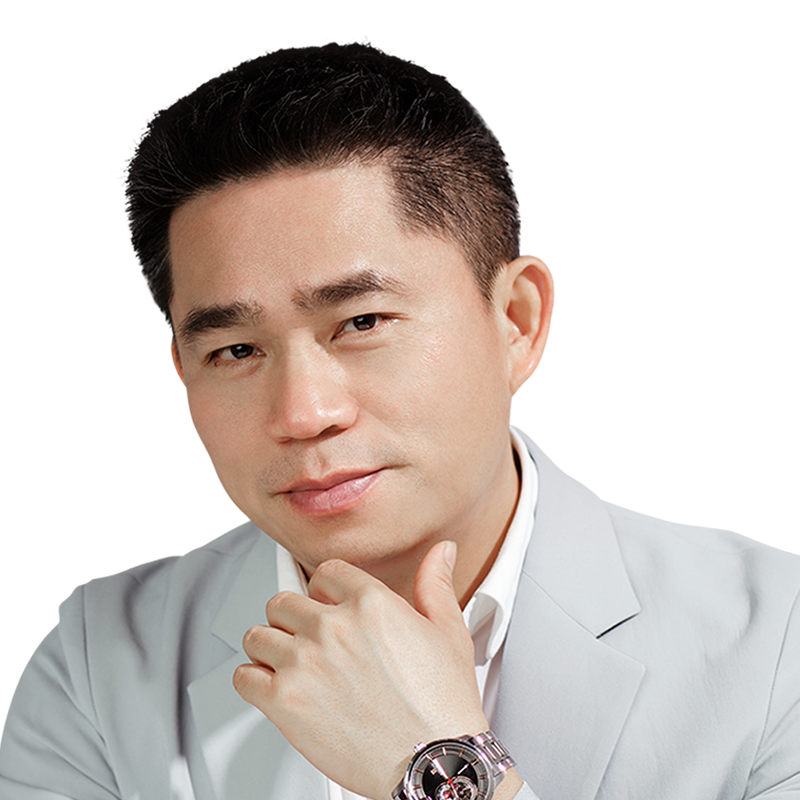
梁俊 华为UCD中心 首席设计总监
负责华为产品用户体验设计至今。早期在CT/IT/ICT/云等领域,通过以用户为中心的体验及服务创新设计,助力通信网络引领全球 。继而在消费者终端领域、出行领域不断以引领性的设计驱动个人、家庭、出行等终端产品成为王者。梁俊跨越端/管/云/服务等的跨领域整体体验规划与设计,为信息化的发展与助力人们美好生活做出卓越贡献,见证了信息化社会转型的沧海桑田。多次获得华为公司金牌个人和团队奖。
数字化创新打造全球体验经济新格局
随着互联网、大数据、人工智能等技术的迅猛发展,数字化已经成为各行各业转型升级的关键驱动力。越来越多的企业和个人开始意识到数字化的重要性,并积极探索数字化技术在自身业务中的应用。
通过数字化创新,消费者可以享受到更加个性化、定制化的购物体验;企业可以实现数字化转型,提高工作效率和管理水平;全球体验经济得以实现国际化发展,为消费者提供更多的选择和便利。
本次数字引领峰会,我们邀请了世界范围内多位优秀的行业专家、领袖,通过分享各企业项目案例,与参会者剖析行业现状,探讨数字化转型将为企业的创新发展带来哪些重要的影响。帮助参会者更好了解数字行业的最新趋势和发展动向,共同探讨数字经济发展的新趋势和新机遇,推动数字经济的健康快速发展。
-
演讲一:《回归本质做设计:体验驱动组织转型》
主讲人:徐萌萌 ( 保时捷数字科技,用户体验设计负责人)
汽车行业的用户体验问题正在经历变革,随着越来越多的新玩家涌入这个赛道,每家企业都有自己独特的“体验感受”。如何在复杂环境中捍卫设计品质,如何实现团队内部的高度协同,成为车企设计团队关注的焦点。
本次峰会演讲,主讲人将结合保时捷数字科技用户体验设计团队的实践经验,为与会者带来一些关于设计领导力的新思路,共同助推汽车行业的发展。
演讲内容:
1、汽车用户体验的复杂性
1.1 软件定义汽车的挑战
1.2 不断刷新的消费者出行体验的新需求
2、如何打造契合品牌调性的设计文化体系
2.1 捍卫品牌调性:建立设计系统
2.2 统一度量衡:建立设计指标体系
2.3 打造持续卓越:推导客户旅程分析工具
2.4 持续验证和挖掘:塑造用户研究的价值
3、打造高度协同的设计团队,激发团队潜能
3.1 在复盘中提炼和沉淀方法论,发展是第一要务
3.2 在具体事件上厘清灰度认知,建立感性共识
3.3 保持组织自更新,持续迈向成长之径
作品/案例-
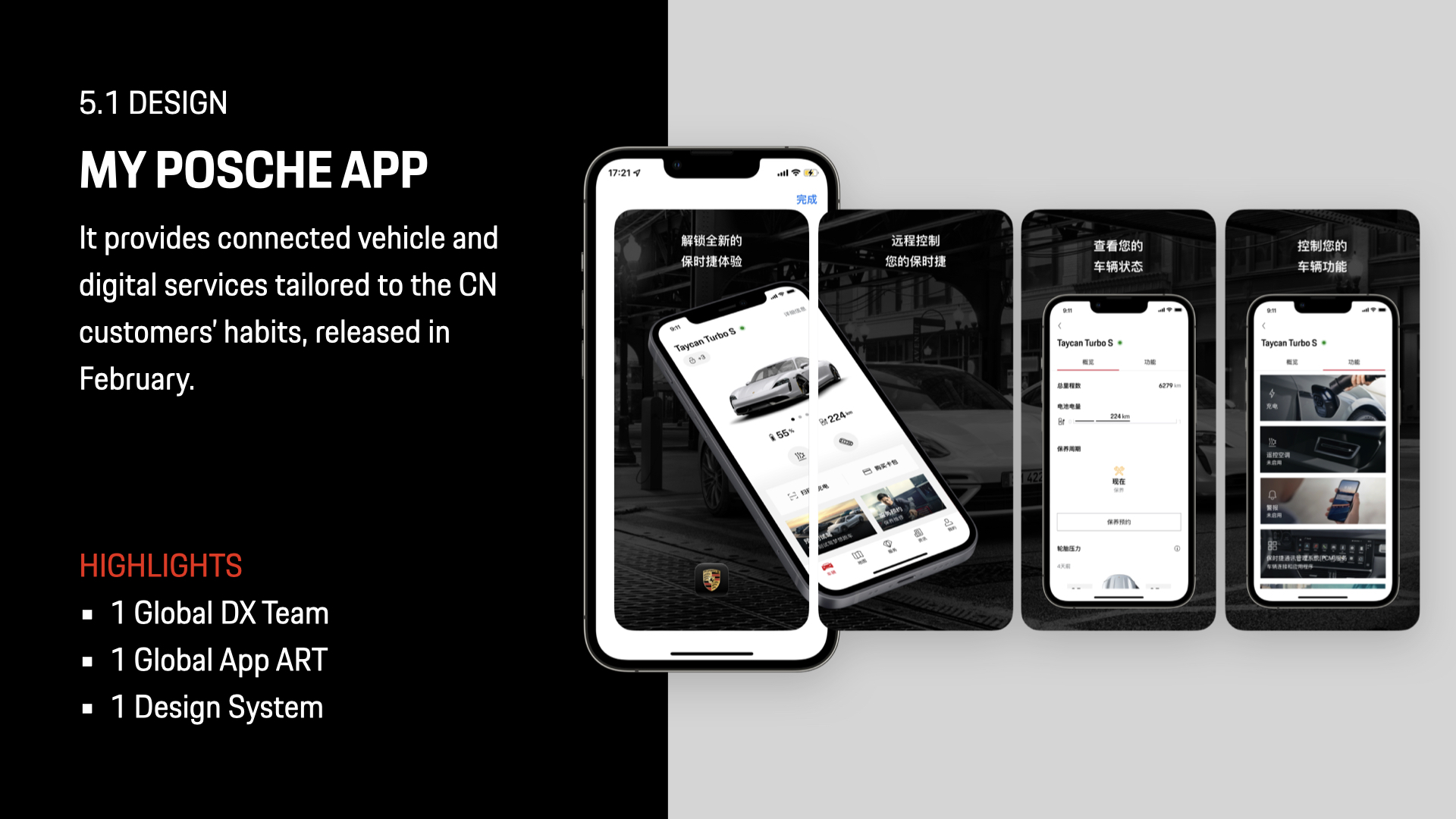 徐萌萌 - My Porsche App
徐萌萌 - My Porsche App
-
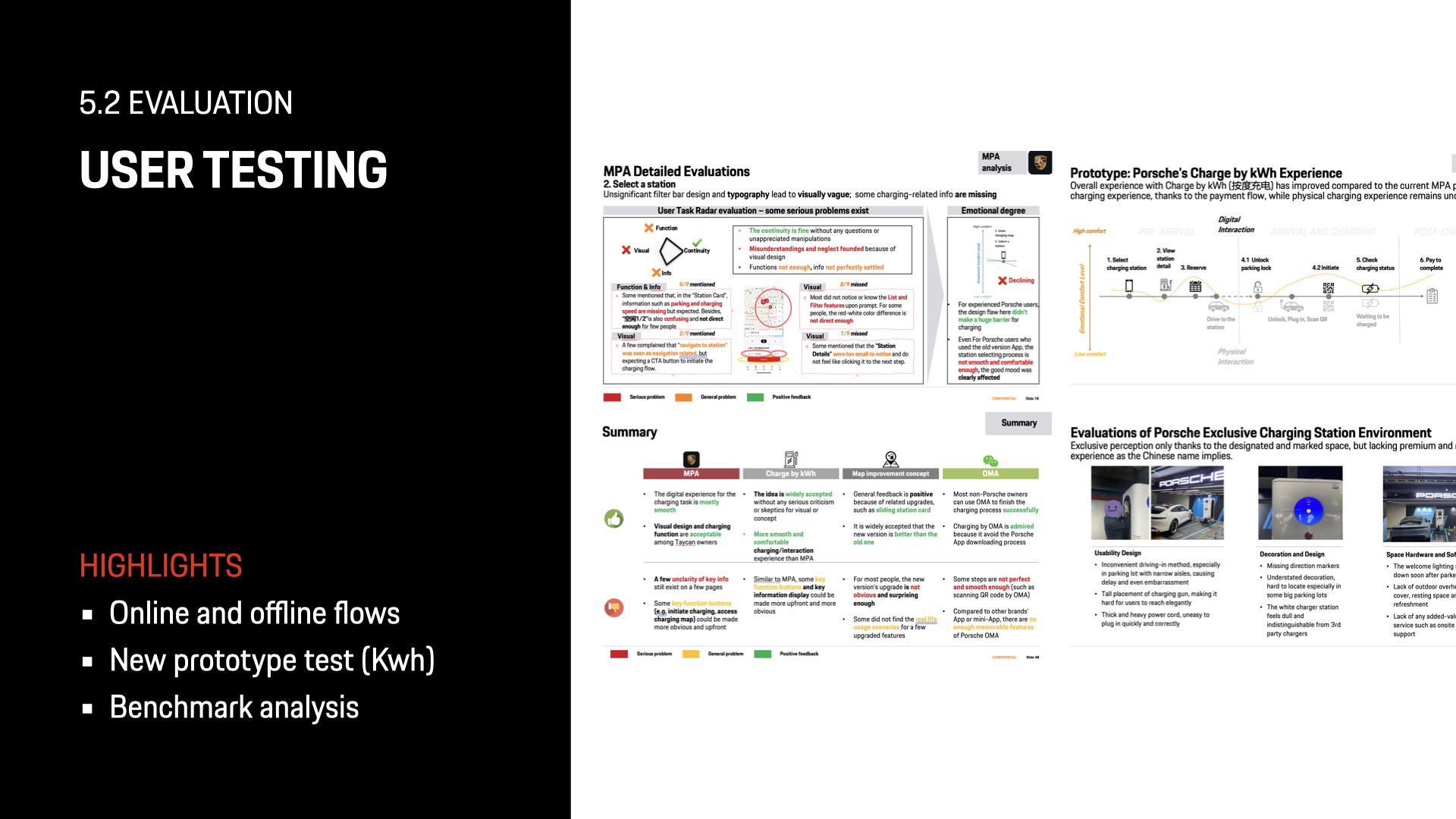 徐萌萌 - User Testing
徐萌萌 - User Testing
-
 徐萌萌 - Innovation
徐萌萌 - Innovation
-
 徐萌萌 - One UI
徐萌萌 - One UI
-
-
演讲二:《楼宇数字化体验创新设计实践》
主讲人:董恺 ( 美的楼宇科技研究院,用户体验研究中心负责人)
美的楼宇科技以人为本,通过高效体验驱动产业数字化转型升级,帮助企业提升数字化运营管理水平,实现降本增效。在国家“双碳”目标下,通过打造智慧碳管理系统、智慧能源管理系统,帮助企业全面洞察碳管理关键指标,实现能源优化控制,推进建筑领域绿色低碳发展。
本次演讲将通过详解美的楼宇科技的实际落地案例,分享在楼宇科技领域如何用数字化体验设计助力双碳战略发展,以及用户体验设计在楼宇科技行业中的发展趋势及重要性和实现方式。
作品/案例-
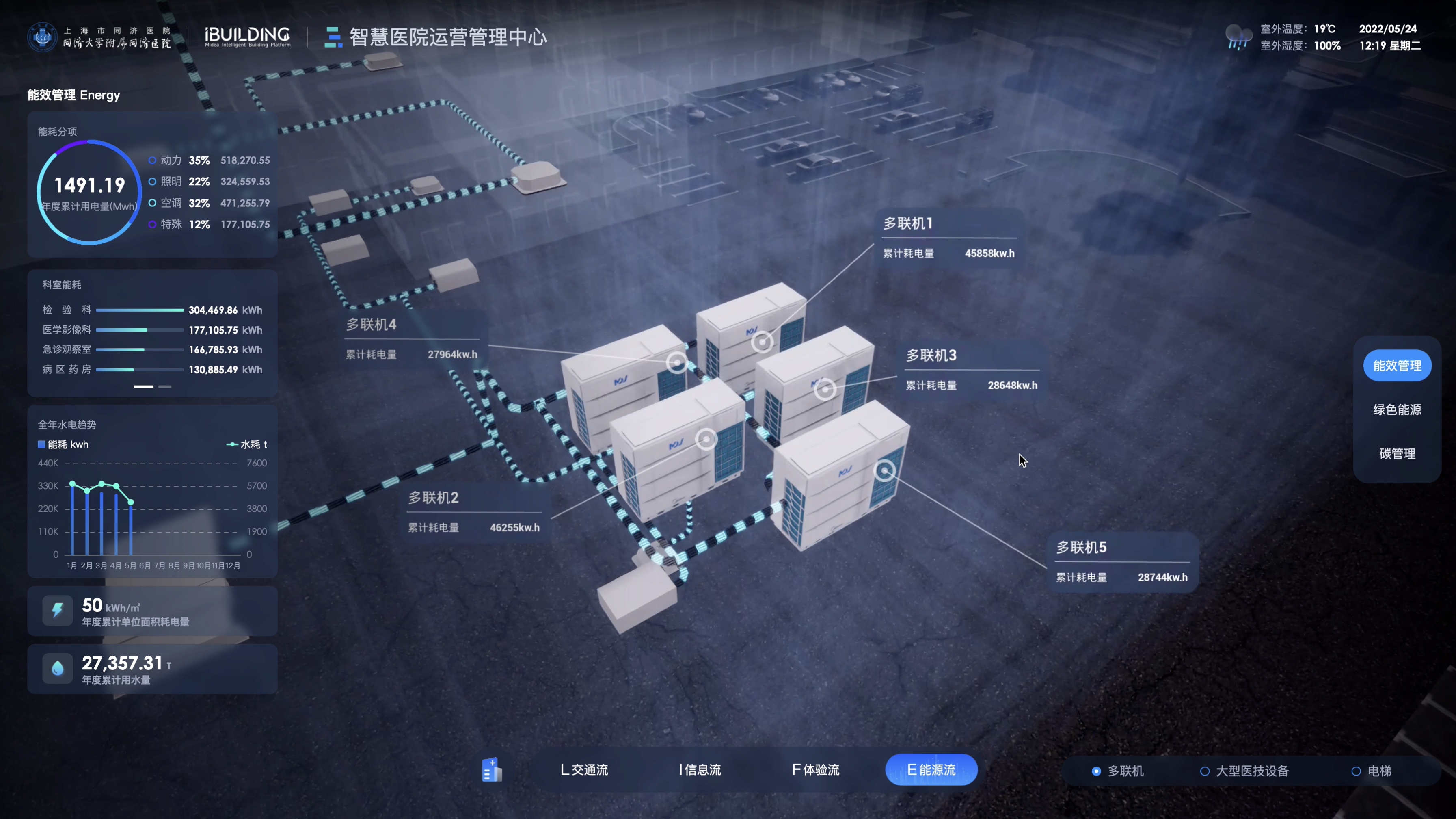 董恺 - 美的iBUILDING同济医院智慧医院运营管理系统
董恺 - 美的iBUILDING同济医院智慧医院运营管理系统
-
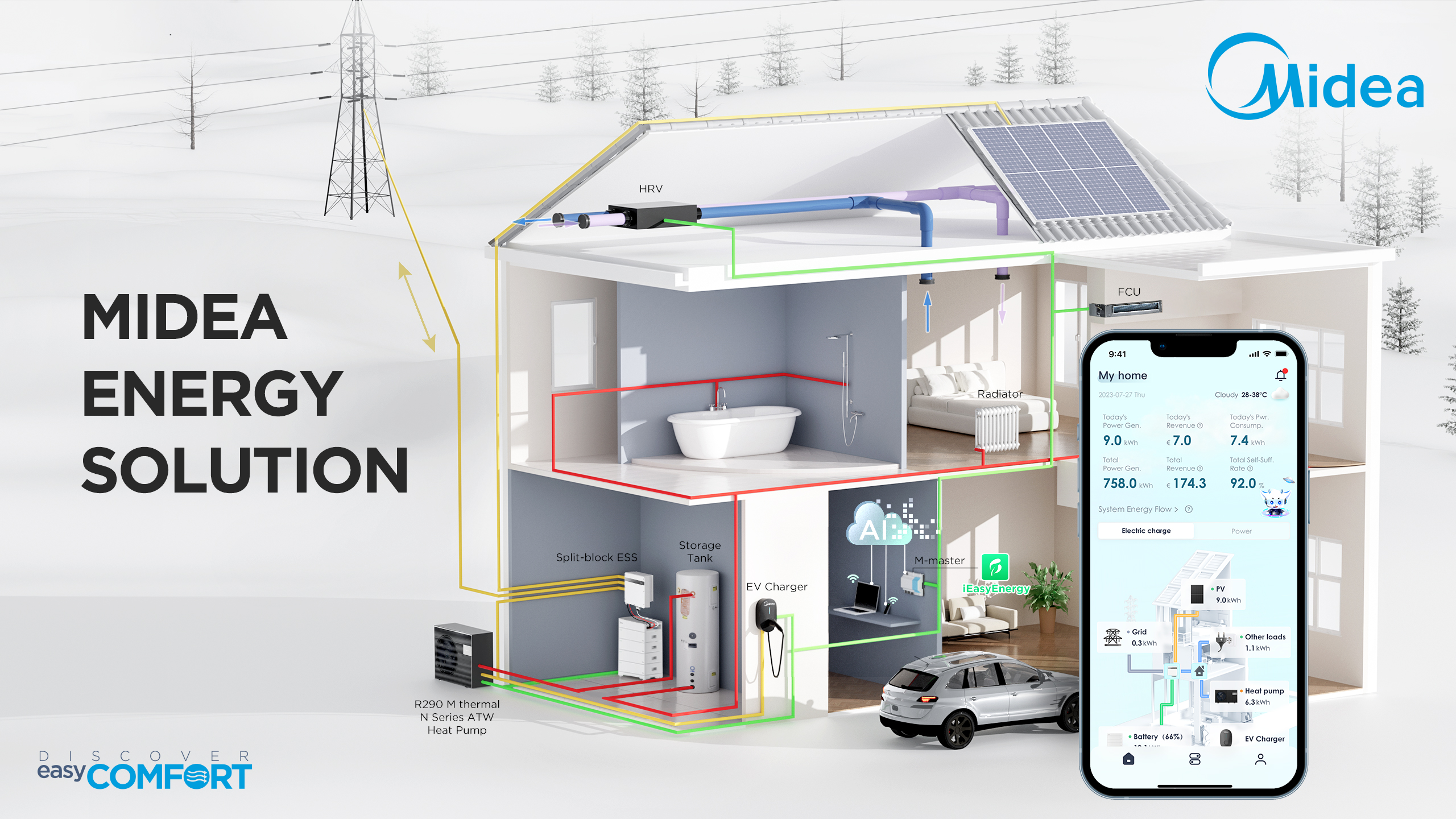 董恺 - 美的-iEasyEnergy APP光储热柔云端智能控制系统
董恺 - 美的-iEasyEnergy APP光储热柔云端智能控制系统
-
 董恺 - 美的iLINVOL电梯售前销售工具
董恺 - 美的iLINVOL电梯售前销售工具
-
 董恺 - 美的iBUILDING智慧园区运营管理系统
董恺 - 美的iBUILDING智慧园区运营管理系统
-
-
演讲三:《跨境数字化体验设计的道与术》
主讲人:刘勇 ( 阿里巴巴,高级体验设计专家)
体验设计服务于人的使用习惯,而非让人来适应设计。各种定律和原则最初的诞生并不是为了设计,而是出于解决管理、经济、法律等行业的问题,经过不断的发展延伸,有了更多的使用基础,得以被我们熟知。特别在大型跨境电商平台中,面向业务和合规逻辑流程异常复杂,本主题演讲通过总结介绍体系化的设计策略和方法,并结合案例对平台客户体验的监测和度量进行分析,阐释系统化提升跨境电商平台中体验从设计要验证优化提升的闭环经验和洞见,最终体系化归纳相关方法和工具进行展示和说明等。
toB类体系化、工程化的体验设计,讲究一个重剑无锋,大巧不工。对于toB类业务往往体系庞大且复杂,摸清整体,构建系统和框架是基础,特别是从工程化的视角着眼去深入,对整体的思考拆解需要形成一把“重剑”杀器,不一定即可就用精致锋利的刀刃去聚焦,而是要命中B类业务的庞杂之系统关键,发力往往讲究的是一个稳、准、狠,需要从整体去稳固出击,正所谓重剑无锋;而在构建起框架和体系之后,再基于流程和链路,或者说协作和运转的过程,去不断磨砺细化,不一定像一辆高端汽车一样,零件都精巧结合,运作丝滑顺畅。很可能样样细节还没那么完美,但是自然本真有符合基本规律或业务规则能够高效运作,肯定还可以更具备精妙优雅之处,正所谓大巧不工。
主题核心内容着重包含四部分:
1、引子和铺垫展示
1.1 通过一个量化和监测的生活案例进行带入,介绍数据监测的作用和意义;
1.2 引出对toB类业务场景的介绍,讲解toB类业务场景、角色、体验特点;
1.3 提出调研、体验、监测的策略,进行全局引导和展示。
2、toB体验监测和度量
2.1 通过实践案例对复杂B类业务下体验量化定义方法进行介绍;
2.2 引出toB体验监测体系的框架和模型设定总结,并结合具体项目案例进行介绍展示。
3、系统化工程化解决之道
3.1 对于toB类业务往往体系庞大且复杂,摸清整体,提出如何构建系统和框架的设计原则;
3.2 通过交易履约toB且toG的复杂场景进行案例介绍和展示;
3.3 总结设计系统化和工程化的解决之道。
4、复杂链路流程的设计方法
4.1 在构建起框架和体系之后,再基于流程和链路进行分析介绍;
4.2 基于协作和运转过程,总结工程系统化设计理念;
4.3 以汽车工程类比,对零部件到系统结合的对比,进行分析;
4.4 最后扣题并总结跨境复杂toB体验设计的理念原则。
学员将会学习到toB体验设计的方法和工具,举例跨境电商场景链路特性,讲解如何对链路动线的体验设计,举例介绍闭环体验监测、度量和迭代完善的策略方法集的实践案例。引导听众理解复杂流程的方案设计要点,深入理解B端业务多角色复杂链路体验设计的底层逻辑,提炼总结道与术的深化。
受众主要定位为希望拓展学习跨境toB体验设计场景的设计师,对“国际化、复杂链路”感兴趣的设计师、产品、研发等。
作品/案例-
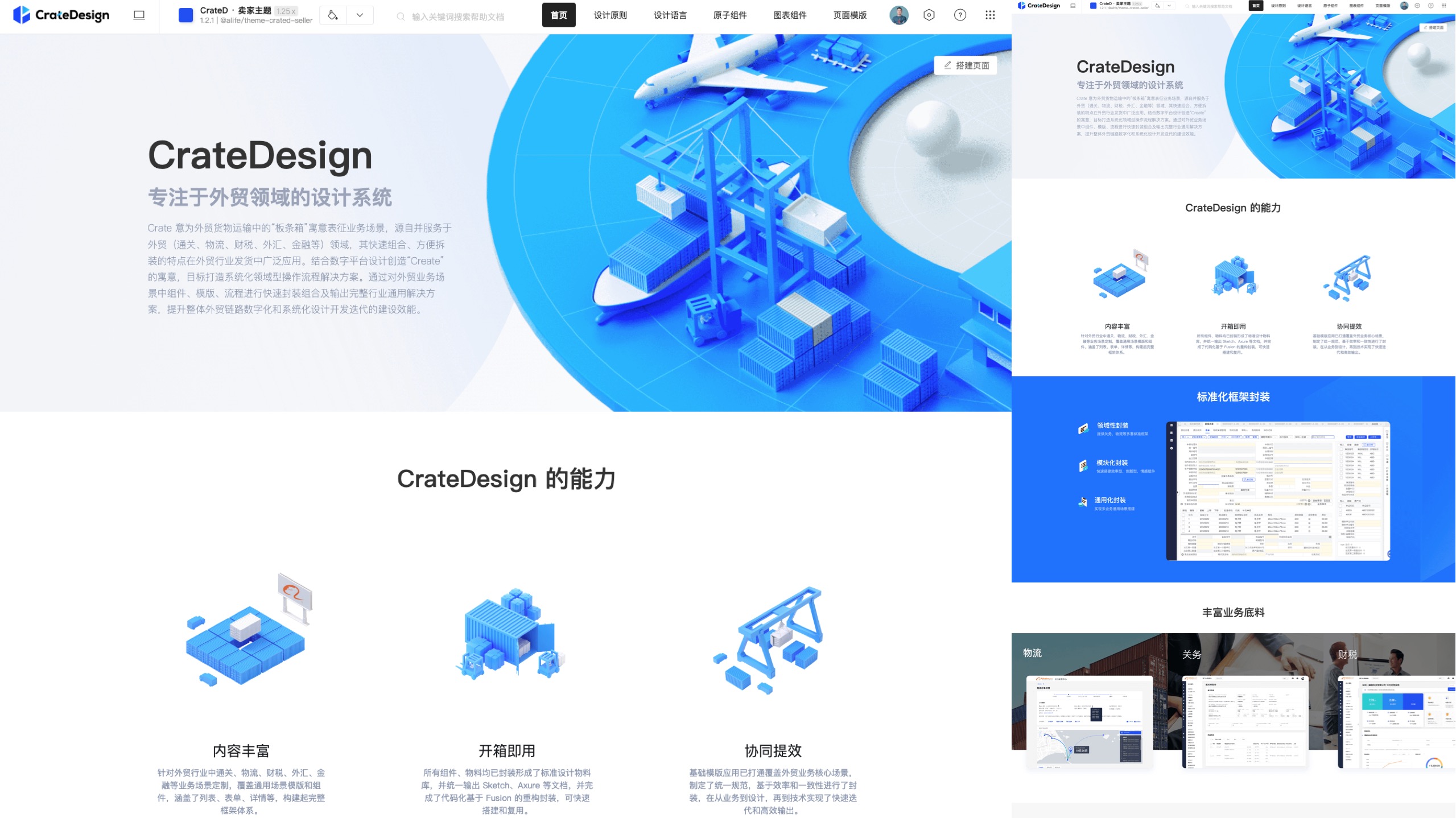 刘勇 - Crated Design System
刘勇 - Crated Design System
-
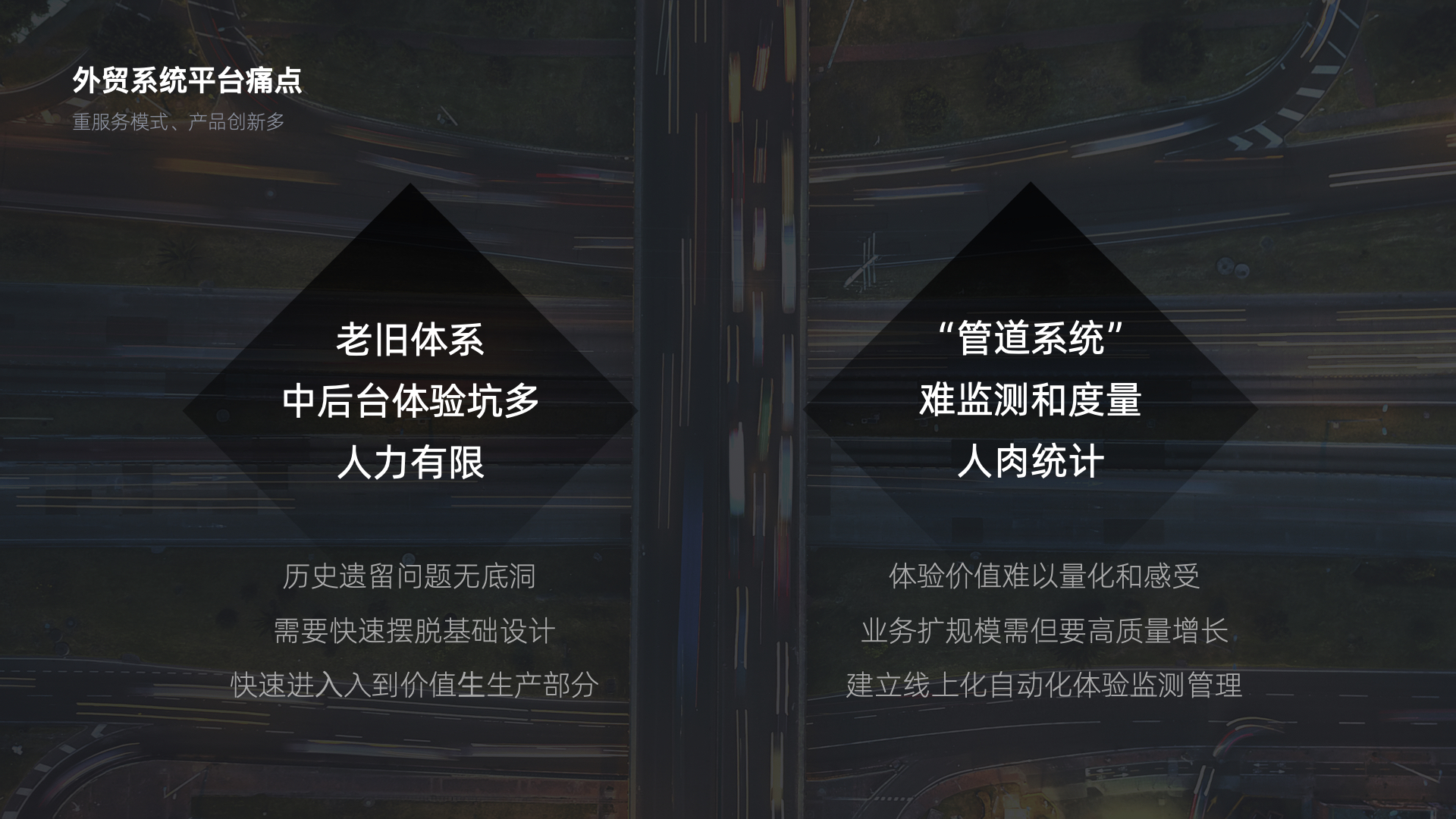 刘勇 - 外贸系统平台痛点
刘勇 - 外贸系统平台痛点
-
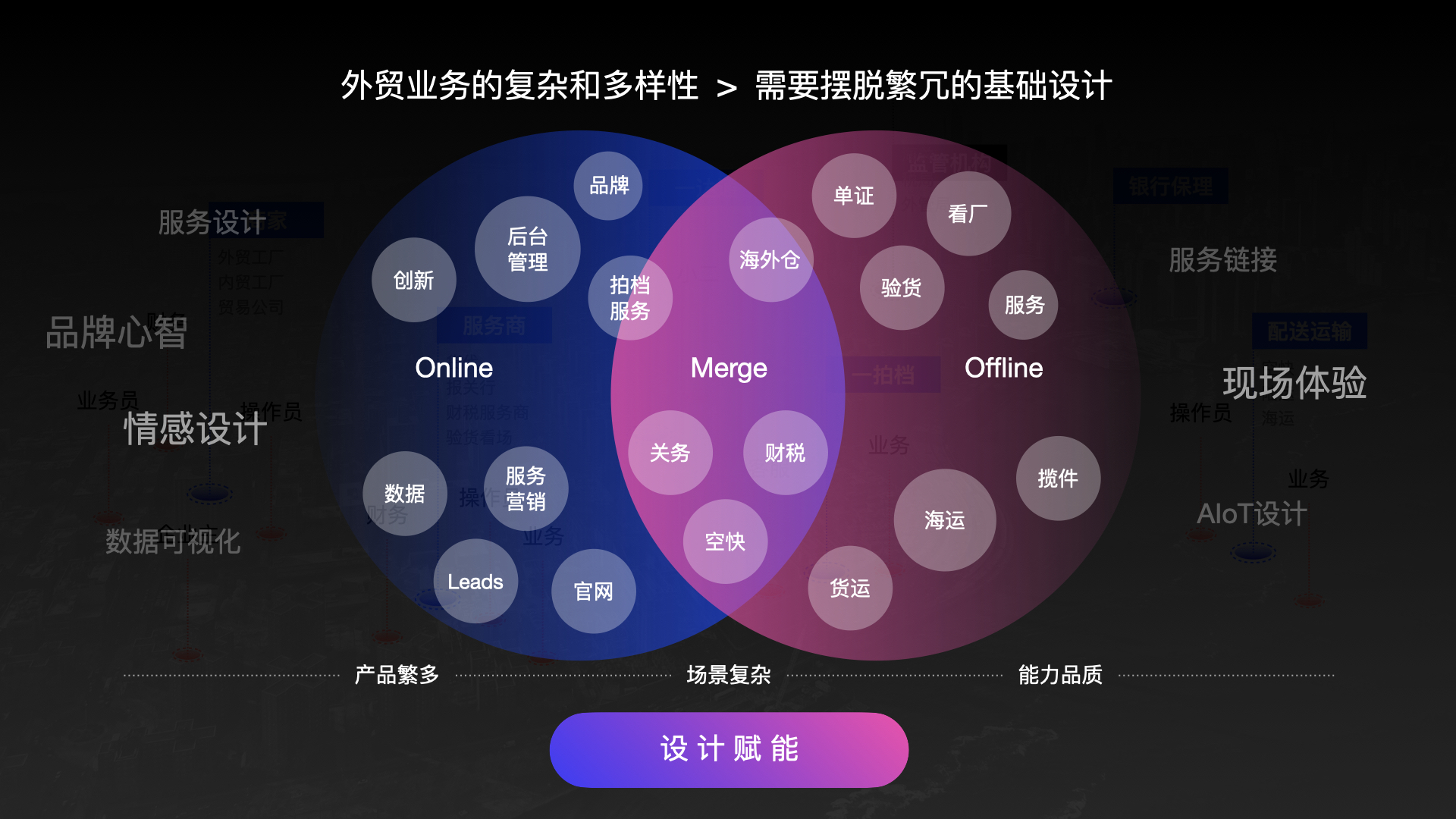 刘勇 - 外贸业务的复杂多样性
刘勇 - 外贸业务的复杂多样性
-
 刘勇 - 外贸生态中的角色
刘勇 - 外贸生态中的角色
-
-
演讲四:《公益数字化,为社会议题解决提供更多元方案》
主讲人:饶瑞 ( 腾讯SSV,小红花设计负责人)
在当今社会,数字化技术已经深入到各个领域,为人们的生活带来了极大的便利。而在公益领域,腾讯技术公益正在通过技术创新,以设计思维对技术公益进行项目规划,建设技术公益底座,将技术应用到更多解决社会问题、创造社会价值的场景中,拓展科技向善更大的可为空间。
1、以设计思维规划技术公益
设计思维是一种创新型思维方式,它强调从用户需求出发,通过观察、理解、分析、创意等步骤,寻找解决问题的最佳方案。腾讯技术公益团队借鉴设计思维的方法论,将其应用到技术公益的规划和实施中
2、建设技术公益底座
为了将技术应用到更多解决社会问题、创造社会价值的场景中,腾讯技术公益团队建设了技术公益底座。该底座由一系列技术组件和工具组成,为公益组织提供全方位的技术支持和服务
3、拓展科技向善的可为空间
通过技术创新和应用,腾讯技术公益团队将科技向善的理念拓展到了更多的领域和场景中
作品/案例-
 饶瑞 - 文化保护领域-数字长城
饶瑞 - 文化保护领域-数字长城
-
 饶瑞 - 心理健康领域-聚光行动
饶瑞 - 心理健康领域-聚光行动
-
 饶瑞 - 动物保护领域-鸟类项目
饶瑞 - 动物保护领域-鸟类项目
-
 饶瑞 - 动物保护领域-雪豹项目
饶瑞 - 动物保护领域-雪豹项目
-
-
演讲五:《面向大型复杂系统的设计工业化实践》
主讲人:陈希 ( OPPO,ColorOS设计总监)
随着手机市场的变化,从增量市场转变为存量市场,竞争变得越来越激烈。在这个背景下,手机操作系统的用户体验面临着前所未有的巨大挑战。特别是在软件设计领域,缺乏有效的实践方法与工具,这使得敏捷响应市场变化和持续满足用户需求变得更加困难。为了应对这些挑战,我们需要建立与时俱进的应对手段。通过建立以设计价值观、设计工程化和设计管理三位一体的全面设计体系,我们可以为体验持续稳健增长提供新思路。
1、「设计价值观」是建立全面设计体系的核心
1.1 设计哲学:产品设计的总指导
1.2 设计理念:跨产品跨业务的共性主张
1.3 设计原则:对业务设计方向的决策指导
1.4 设计指南:业务领域内设计的具体指导
1.5 设计规范:具体业务的设计实施要求
2、「设计工程化」是全面设计体系的重要支撑
2.1 原型与验证:设计价值验证决定资源投资
2.2 度量与评价:可度量可迭代的产品体验
2.3 标准与交付:基于生产链路的上下游交付
2.4 平台与工具:统一的资产库与可视化开发调试
3、「设计管理」是全面设计体系的领导力量
3.1 设计资源管理:可视化资源看板,清晰的设计投资与负债
3.2 设计战略管理:直接面向市场的设计策略制定
3.3 文化管理:追求卓越的产品设计文化
3.4 组织与人才管理:人才的可持续供应与发展
作品/案例-
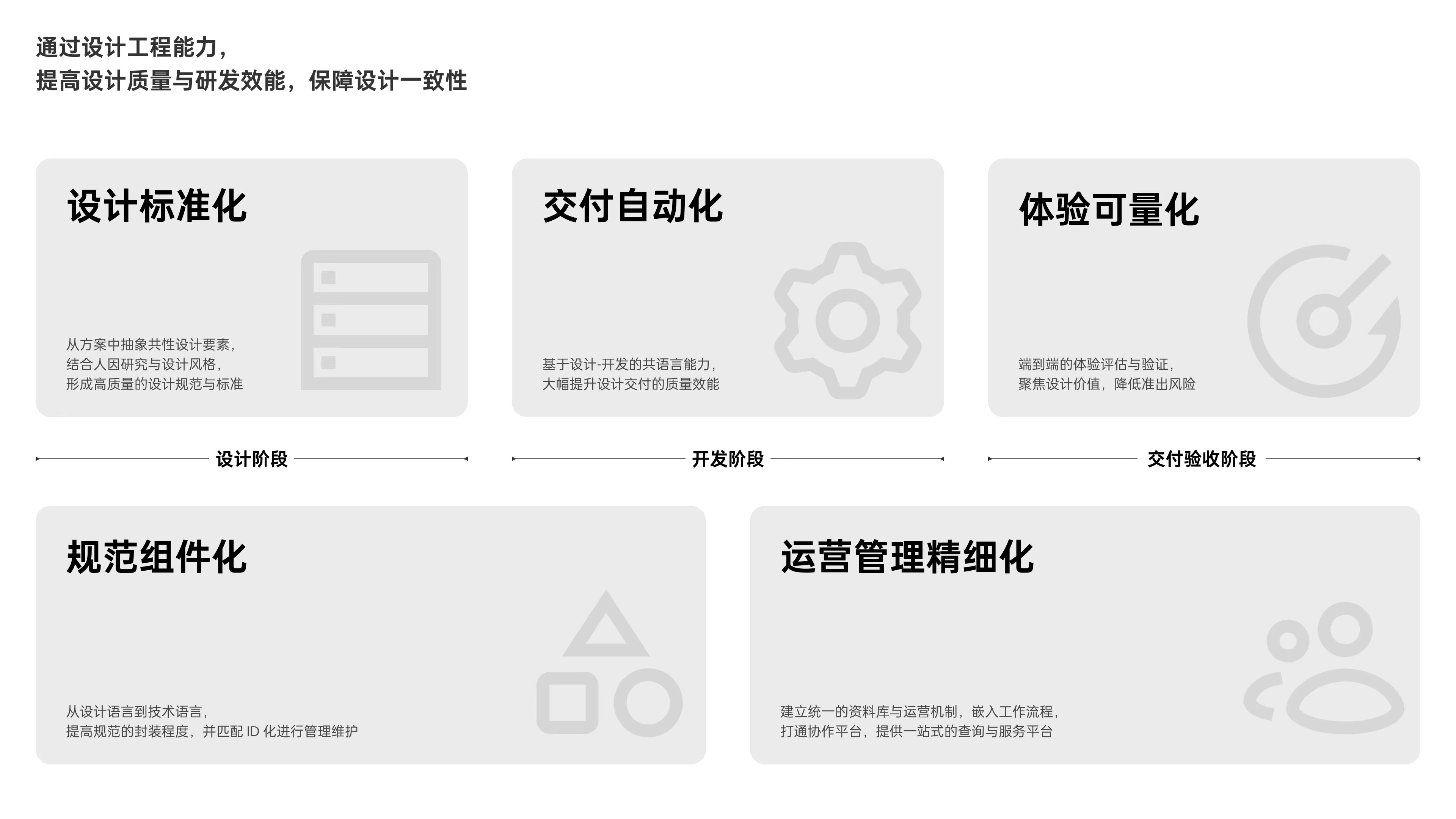 设计工程化
设计工程化
-
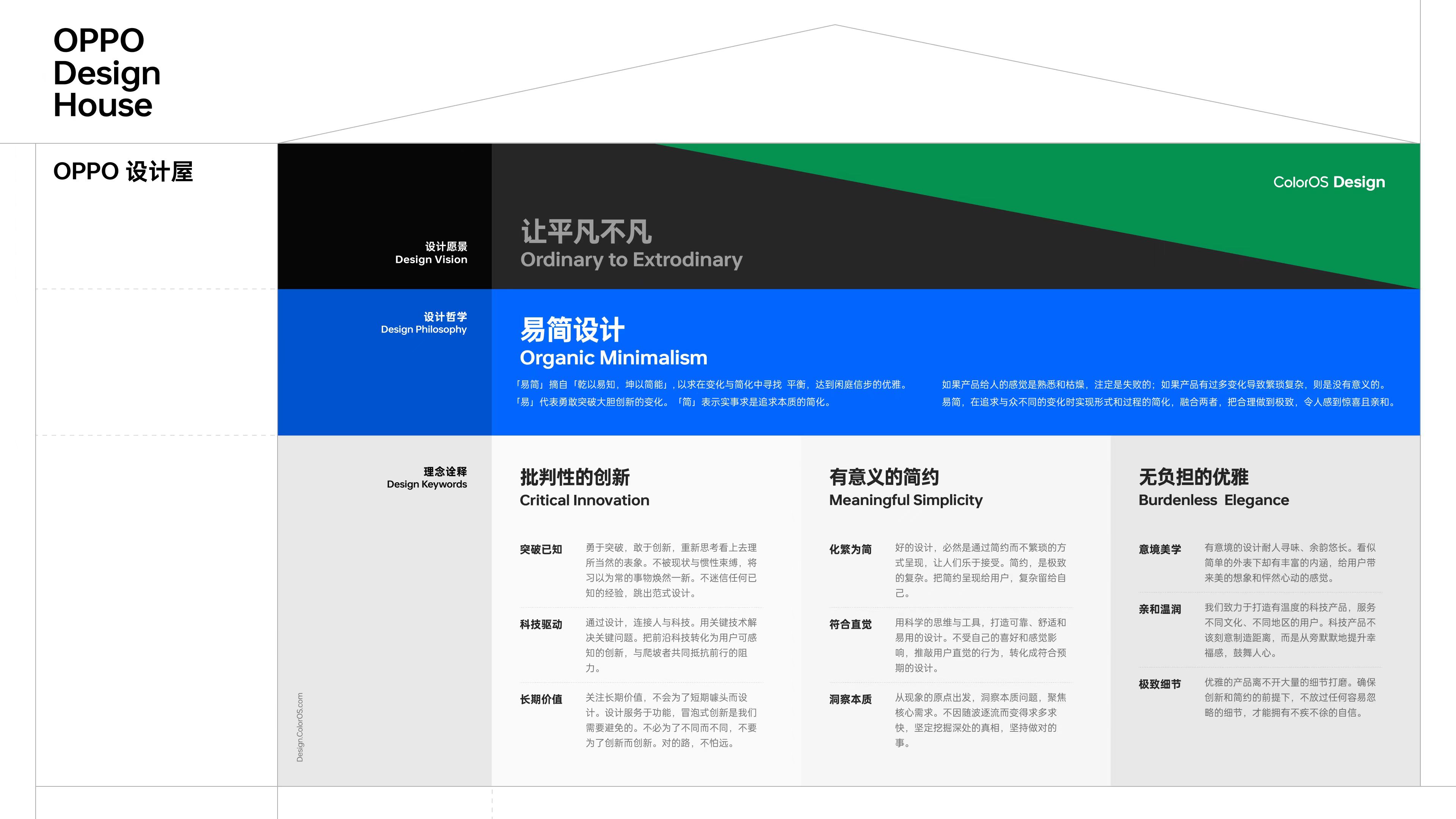 OPPO设计屋
OPPO设计屋
-
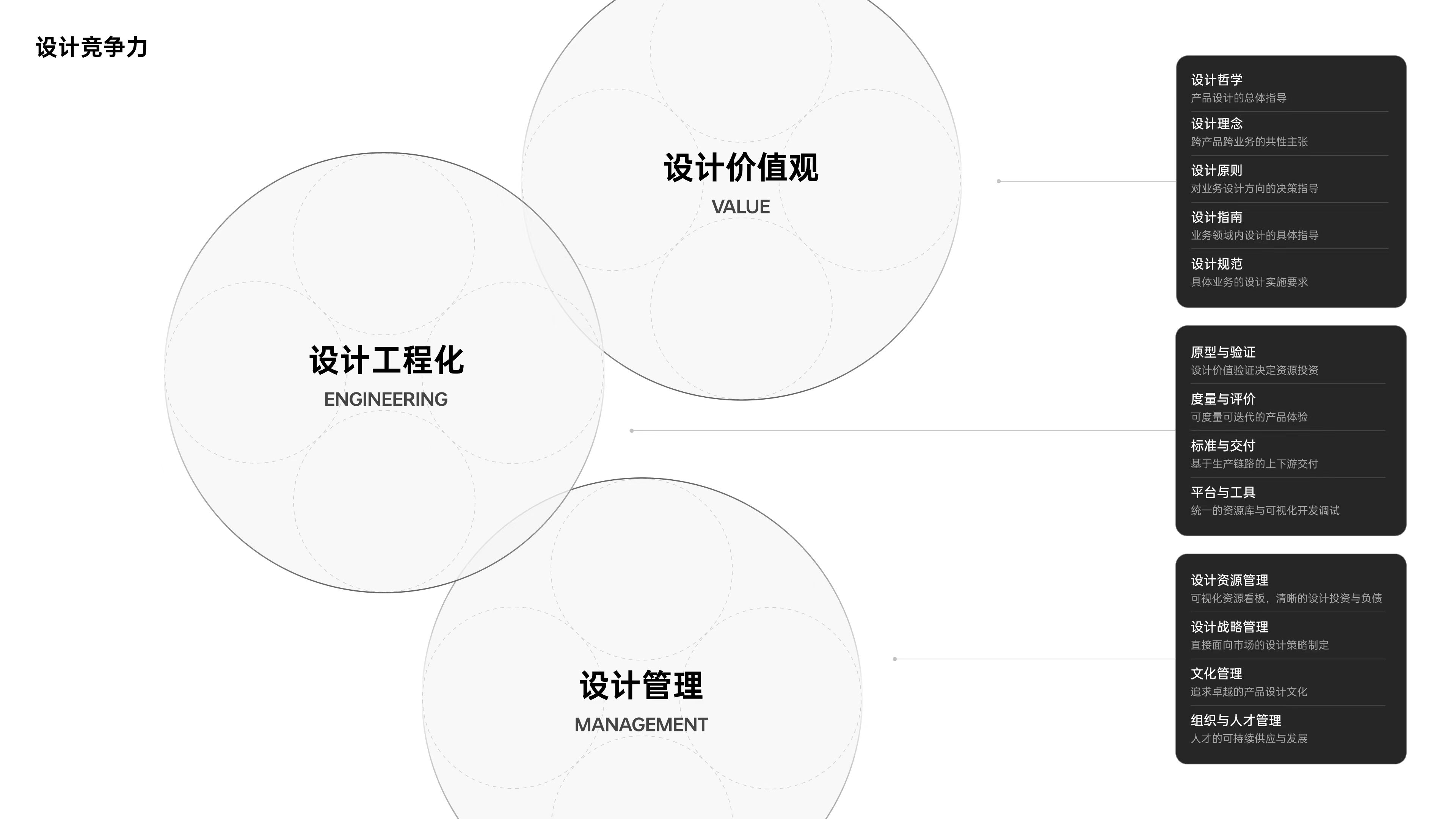 设计竞争力
设计竞争力
-
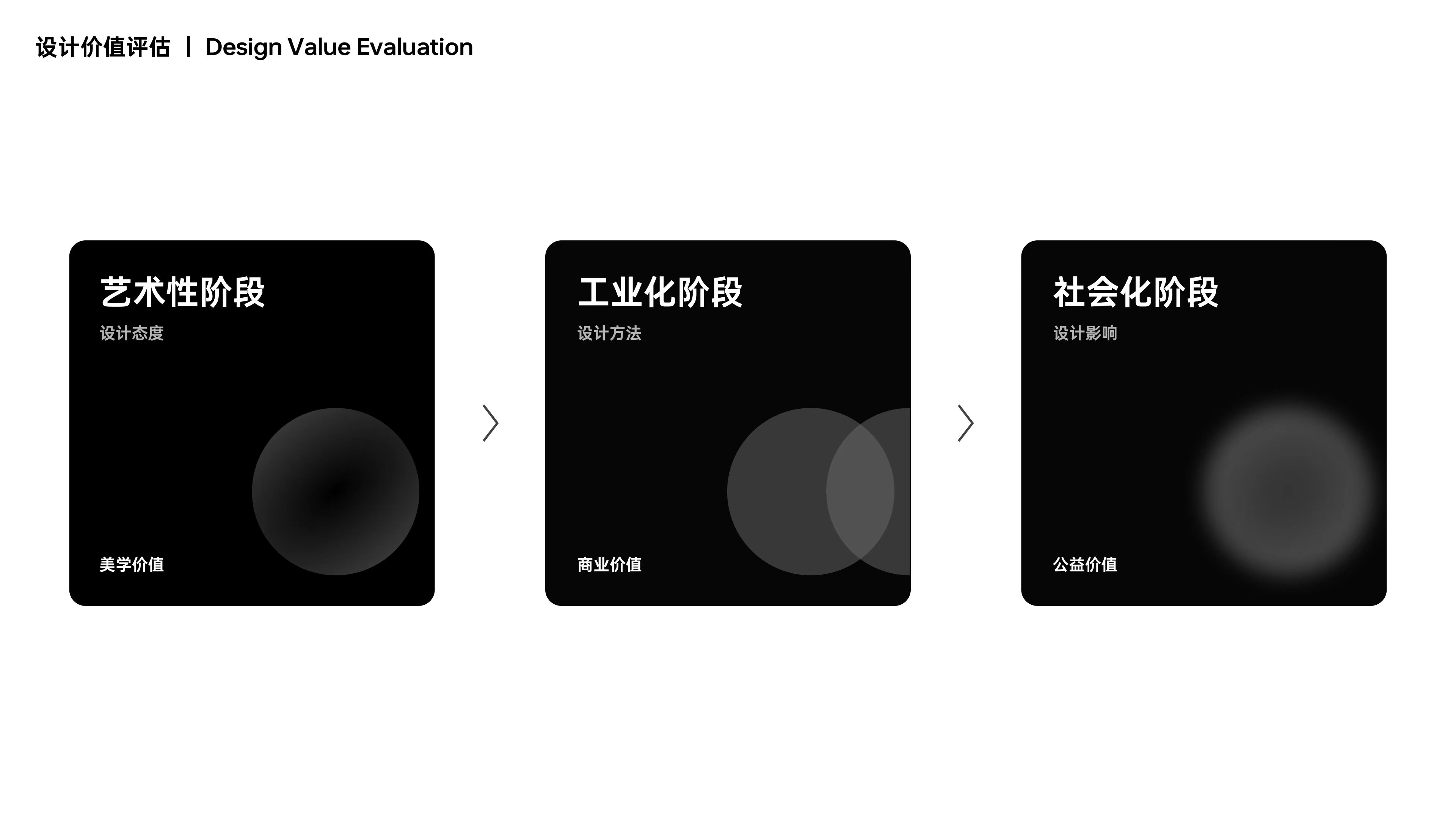 设计价值评估
设计价值评估
-
1、用户体验设计师
2、对设计工具前沿发展感兴趣的从业者
3、企业数字化转型负责人、参与者
4、希望拓展学习跨境toB体验设计场景的设计师
5、对“国际化、复杂链路”感兴趣的设计师、产品、研发等
1、了解智能化时代下的体验设计趋势
2、了解企业转型真实设计案例、设计流程、设计效果
3、了解到如何在设计中应用创新思维,以及如何不断挑战和突破自己的思维定式
4、学习toB体验设计的方法和工具
5、深入理解B端业务多角色复杂链路体验设计的底层逻辑



